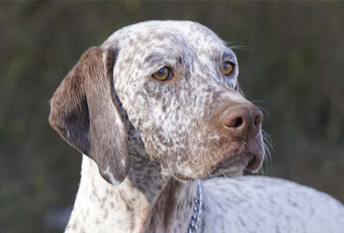The Porcelaine is a medium-sized French scent hound. They were developed for flushing and hunting hare, deer, and wild boar. It is thought to be the oldest French scent hound breed in existence. He is also known as the Chien de Franche-Comte, referring to a French region bordering Switzerland.
As far back as the 1700s, there are records showing this breed in France and Switzerland. It is known that the background of the Porcelaine may include theEnglish Harrier, Laufhounds, Montaimboeuf, and the Talbot Hound. Most of the breeding took place in Vaud, Savoy and the Abbeys of Luxeuil and Cluny, in particular with the family of Choiseul. During the French Revolution, the breed was nearly lost, but has since been reconstructed using French hounds such as Gray Harriers of Somerset, Gascon Saintongeois and the Billy. These outcrosses gave the Porcelaine vigor, size and strength to hunt wild boar and stag. Described as robust and tenacious, this is a hound capable of running long distances and working in steep, rugged terrain.
The Club du Porcelaine in France was established in 1971 to safeguard the breed and, currently, there are moderate numbers of them in France and Italy. There are smaller numbers of the breed found throughout Europe and the United Kingdom.The breed was recognized by the FCI in 1975.
Porcelainesmay have arrived in the United States as a gift from the King of France to President George Washington. There are records showing that Porcelaines were imported in the late 1800s through the Port of New Orleans, but were lost in crossbreeding with local hounds. More recently, Porcelaines were imported into the United States in 2009 and, currently, there is thought to be less than 300 in the U.S. and Canada.












